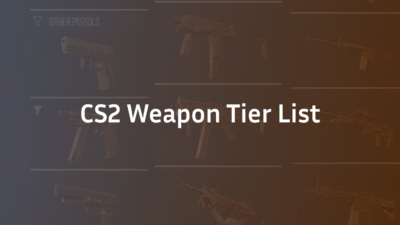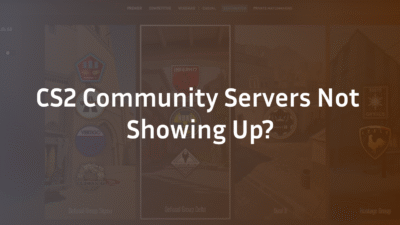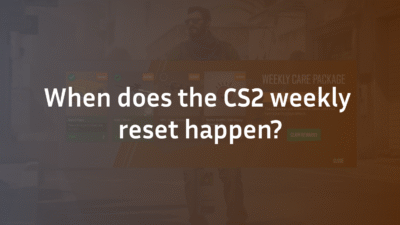CS2 Deathmatch: The Ultimate Warm-Up and Aim Training Guide
CS2 Deathmatch is more than just a casual game mode; it’s the most efficient tool for sharpening your raw mechanical skill, warming up before a ranked match, and testing new strategies in a high-intensity environment. Unlike the strategic, round-based pressure of Premier mode, Deathmatch is a relentless test of reflexes, crosshair placement, and aim duels. However, many players jump in without understanding its mechanics, leading to frustration and missed training opportunities. This guide will transform how you view and play CS2 Deathmatch, turning it into a purposeful practice session that directly translates to competitive success. Whether you’re looking to improve your flick shots or understand the nuances between Free-for-All and Team Deathmatch, we break down everything you need to know.
What is CS2 Deathmatch? The Core Gameplay Loop
CS2 Deathmatch is a fast-paced, respawn-based game mode designed for constant combat. The primary objective is simple: accumulate points by eliminating other players. The first player or team to reach the point limit—or the one with the most points when the time limit expires—wins the match. This mode strips away the economic management and tactical executes of Competitive play, focusing purely on gunfight mechanics. Players instantly respawn after being killed, often with a brief period of spawn protection to prevent immediate re-frags. With infinite ammo and the ability to refill weapons and grenades simply by walking over them, the action is non-stop, making it an ideal environment for practicing aim and movement.
Key Benefits of Playing Deathmatch in CS2
Integrating Deathmatch into your daily routine offers tangible benefits that directly improve your performance in serious matches. It is widely regarded as the best way to build muscle memory and confidence.
- Superior Aim Training: The high volume of engagements per minute is unmatched. You will encounter more aim duels in a 10-minute Deathmatch session than in several full Competitive games, drastically accelerating your aim improvement.
- Effective Warm-Up: Before jumping into your Premier matches, a quick Deathmatch session gets your hand-eye coordination dialed in, your reactions sharp, and your mind focused on hitting heads. Many professionals use it as a mandatory warm-up ritual.
- Weapon Mastery: Deathmatch allows you to practice with any weapon in the game. Whether you’re struggling with the AK-47’s spray pattern, learning to control the AWP’s scoped sensitivity, or mastering pistols for eco rounds, you can select your loadout and practice freely. This is crucial for understanding primary weapons and secondary weapons alike.
- Map Knowledge and Angles: Constant spawning across the entire map forces you to learn common angles, pre-aim spots, and sound cues from every possible direction. This deepens your understanding of popular Maps like Dust II or Mirage far more quickly than standard play. For a detailed breakdown of callouts, our Mirage Callouts guide is an essential resource.
CS2 Deathmatch Modes Explained: FFA vs. Team Deathmatch
Valve’s official Deathmatch servers offer two distinct experiences, each with its own advantages for training. Understanding the difference is key to targeting your practice.
Free-for-All (FFA) Deathmatch
In Free-for-All mode, every player is an enemy. This is the purest form of deathmatch, often hosted on community servers with custom settings. The chaos of being surrounded by foes from all angles is intense but incredibly effective for improving your situational awareness and first-bullet accuracy. You must be prepared for a fight at every corner, simulating those moments in a real match where you have to win multiple duels in quick succession.
Team Deathmatch (TDM)
In Team Deathmatch, players are split into Terrorist and Counter-Terrorist teams. This mode is slightly less chaotic than FFA and often more closely resembles the angles and engagements you’ll find in a real match. It allows for more structured practice, like holding a site as a CT or practicing a specific execute as a T. The team dynamic can make the mode feel less punishing for newer players while still providing excellent repetition for aim training. To make the most of your practice, ensure your CS2 Settings are perfectly tuned for responsiveness and clarity.
How to Play CS2 Deathmatch: A Step-by-Step Guide
Getting into a Deathmatch game is straightforward. Here’s how to do it on Valve’s official servers:
- Launch CS2 and from the main menu, click on “PLAY.”
- Select the “DEATHMATCH” option from the list of game modes.
- You will be presented with a list of available official servers, typically filtering by ping.
- Choose your preferred server and click “GO” to join the queue.
Once in the game, you can change your loadout at any time by pressing the B key to open the buy menu. Remember, you keep your current weapon until you die or manually change it.
Advanced Deathmatch Strategies for Maximum Improvement
Simply playing Deathmatch is good, but playing with purpose is what separates good players from great ones. Here’s how to optimize your time.
- Focus on Crosshair Placement: The most important skill to practice. Always keep your crosshair at head level where an enemy would appear. This halves the time required to land a killing shot.
- Listen for Audio Cues: Sound is critical. Use footsteps and gunfire to anticipate enemy positions and prepare for engagements. For the best auditory advantage, consult our Best CS2 Audio Settings Guide.
- Embrace Movement: Practice counter-strafing to stop instantly and fire accurately. Good movement makes you a harder target to hit and is the foundation of winning duels.
- Set Specific Goals: Don’t just play for kills. Set objectives for yourself, like “only tap shots with the AK” or “practice one-taps with the USP-S.” For a deeper dive into perfecting your pistol rounds, our guide on How to Equip USP-S in CS2 offers valuable insights.
- Vary Your Engagement Ranges: Don’t camp one area. Move around the map to practice long-range spray transfers, medium-range bursts, and close-range flicks.
Customizing Your Experience: Console Commands and Community Servers
While Valve’s official servers are convenient, the community server browser offers a wealth of customized Deathmatch experiences. These servers often feature:
- Headshot Only: Forces players to get headshot kills, dramatically improving your precision.
- 128-Tick Rates: Many community servers run on 128-tick, which can feel more responsive. To understand why this matters, read our explanation of CS2 Tick Rate & Sub-Tick.
- Specialized Maps: Streamlined maps designed solely for aim duels, reducing downtime between fights.
To access these, use the “Browse Community Servers” option and filter for “Deathmatch” or “DM.” You can also use specific CS2 Surf Commands to find warm-up servers that combine movement training with deathmatch.
Conclusion: Transform Your Gameplay with Purposeful Practice
CS2 Deathmatch is not just a mindless shooting gallery; it is a powerful training ground. By understanding its mechanics, embracing both Free-for-All and Team modes, and applying focused strategies, you can systematically dismantle your weaknesses and build unshakable aim confidence. The benefits of refined crosshair placement, sharper movement, and deeper map knowledge will be immediately evident in your Competitive and Premier performance. Stop playing Deathmatch passively—start training with intention.
Ready to take your skills to the next level? Ensure your foundation is solid by mastering all the CS2 Maps and optimizing your CS2 Settings like a pro.
FAQ Section
What is the difference between Free-for-All and Team Deathmatch in CS2?
The core difference lies in the team structure. In Free-for-All (FFA), every player is an enemy, creating a chaotic environment that trains your reflexes and ability to handle attacks from all directions. In Team Deathmatch, players are divided into Terrorists and Counter-Terrorists, which provides a slightly more structured experience that can better simulate the angles and team-based engagements of a standard competitive match.
How does the points system work in CS2 Deathmatch?
Points are awarded primarily for killing opponents. A standard kill is worth 1 point. However, the game often incentivizes skill-based play by awarding bonus points for headshots or kills with bonus weapons that periodically change. The first player or team to reach the point limit (usually 100 kills in Team Deathmatch) wins the match. If the time limit is reached first, the player or team with the highest score wins.
How long does spawn protection last in CS2 Deathmatch?
Spawn protection in CS2 Deathmatch is a brief period of invulnerability granted to a player immediately after respawning. This typically lasts for approximately two to three seconds, or until the player moves or fires their weapon. This mechanic is designed to prevent spawn camping and give players a moment to orient themselves before engaging in combat.
Can I practice grenades in Deathmatch mode?
Yes, you can practice grenades in Deathmatch. While the core focus is on shooting, you spawn with grenades and can use them to practice line-ups, smokes, and flashes during live combat. However, for dedicated and repetitive practice of specific grenade line-ups, using a private server with CS2 Smoke Practice Commands is generally more efficient and highly recommended.
Why should I play Deathmatch if I only care about competitive ranking?
Playing Deathmatch is one of the most effective ways to improve the mechanical skills that are fundamental to climbing the CS2 Ranks. Competitive matches often have limited engagements, meaning you get few chances to practice raw aim. Deathmatch condenses hundreds of aim duels into a short session, building the muscle memory and confidence needed to win crucial fights in your ranked games, directly impacting your ability to rank up.



